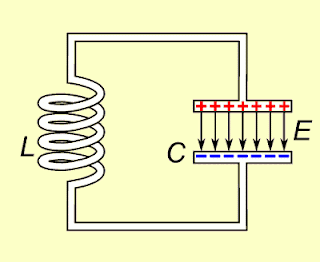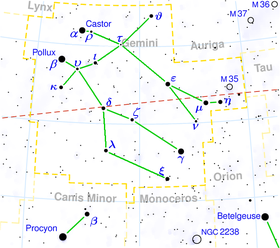~Gen 24:29-48 NJB
The First Insight Theory: Mysterious coincidences cause the reconsideration of the inherent mystery that surrounds our individual lives on this planet.
~James Redfield, The Celestine Prophecy
Why hast thou cast our lot
In the same age and place?
And why together brought
To see each other's face?
To join with softest sympathy,
And mix our friendly souls in thee?
~Charles Wesley, Engagement Hymn, MHB 716
In previous blogs I reflected on the "geographies" of our cradles and graves, of "hatches" and "dispatches". In the collective psyche of humanity birth places and death beds have been tinged with the mystical. These are sacred places, sometimes called "thin places" or even "stargates".We need only think of Bethlehem and Golgotha.The tagline to the "Stargate Universe" television series is "Where will Destiny take you?"
However, what about "matches"? Marriage is a portal and like birth and death is associated with "passage rites". An important feature of such significant moments and places is the idea of "synchronicity". A synchronicity is a meaningful coincidence.
Carl Jung wrote in Synchronicity, An Acausal Principle: "By far the greatest number of spontaneous synchronistic phenomena that I have had occasion to observe and analyze can easily be shown to have a direct connection with an archetype." Marriage is one such archetype and possibly the most synchronistic of all. It is the "the girl at the spring" moment. What Brigid of the Wells is to the Celts so is Rebecca and Rachel to the Hebrews.
"According to psychologist Carl Jung, marriage is one of the great event archetypes, along with death, birth, initiation and a few others. Jungian psychologists believe that these archetypes exist in a collective unconscious mind that binds together all living beings, organizing the experiences of each species–all the experiences, back to the very beginning–to create an ever-increasing pool of knowledge, belief and expectation that each individual shares, and to which each contributes their own experiences." ~ http://blog.californiapsychics.com/blog/2010/08/the-archetype-of-marriage.html
"The wedding and specifically the bride just might be one of the grandest of all archetypal images. .... [Jung] said that archetypes function like river beds." ~Dr Jeff Howlin
Chance? Fate? Karma? Kismet? Murphy's Law? Synchronicity? Providence? Quantum Entanglement? So many words to describe the "chemistries" or "connections" we experience! Deepak Chopra coined the word "SynchroDestiny".
Friedrich Schiller (1759 - 1805) said, "There is no such thing as chance; and what seem to us merest accident springs from the deepest source of destiny." Indeed!
I had the great privilege to prepare many couples for marriage. With each couple I would ask two questions and make a statement of fact:
- "When and where were you born?" - This was a legal requirement but it was a loaded question about beginnings.
- "Your earthly relationship will come to an end. Hopefully not because of divorce but then certainly because of death." - A statement of fact but opened us to a consideration of endings.
- Then what I considered the most fascinating: "How did you meet? What brought you together?" - This enabled us to explore synergies and synchronicities.
So how did Sylvia and I meet? What strange providence had "cast our lot in the same age and place" that together we might be one? On the surface of things it was rather obvious that we would have met in the way we did. Sylvia was, after all, "the girl next door". There was nothing unusual about that. Or was it?
YMCA-YWCA
As chance would have it, we lived across the road from each other in Rissik Street, Johannesburg. She was in the YWCA and I was in the YMCA. One doesn't have to be a rocket scientist to realise that inevitably there would be at least some magnetic flux between the two hostels. It was simply a matter of biological attraction, of boy meets girl, was it not? Some might say pheromones were the cause, that love was in the air. Proximity had brought us together. Others again would contend that surely there must have been something more “metaphysical” than just "pollen spores". Facilitating all this, of course, was that many residents of both the YWCA and YMCA congregated at the nearby Clifton Methodist Church. A large number of matches happened and were sealed there. In this way like met like.
YMCA Bedroom View across to the YWCA
To my electronics biased mind, the love acted much like a "band pass filter" naturally bringing suitable partners together because they radiated similar "vibes" while filtering others out. For technicians romance becomes a case of resonating circuits, automatic frequency or phase-locked loop control systems. It was harmonics and Fourier Analysis!
A L-C Resonating Circuit (Graphic: Wikimedia Commons)
NITR-SAIMR
Sylvia moved into the YWCA because she was working at the nearby SA Institute for Medical Research (SAIMR) studying to become a medical technician and I had moved to the YMCA working at the Tracking Station of the National Institute of Telecommunications Research (NITR) and studying to be an electronics technician. While I attended day classes at the Witwatersrand Technical College she attended night classes there. So there was much in common.
What interested me however were the other more extraordinary events that had conspired long before we had even met, that brought us together. It was only very much later in our marriage that this even dawned on us. What “star-crossed” circumstances had led me ending up in Johannesburg to be on the same "street where she lived"? I wasn't a Johannesburg boy. This thought was all the more strange considering that while we were both born in Africa, to South African parents, we had in fact been born some 4833 km apart as the stork flies. I was born in Ladysmith, South Africa whereas Sylvia was born in Vom, Nigeria, both in the late 1940s. We met some twenty years later. Here to mention but three of the strange concurrences that led to our lives being so entwined. They set the scene and was...
The Proscenium...
"the part of a theatre stage between the curtain and the orchestra (i.e., in front of the curtain)
In ancient Rome, the stage area in front of the scaenae frons was known as the "proscenium", meaning "in front of the scenery". As a metaphor, the proscenium is a "window" to the stage of life. Three instances come to mind...
First: Balgay Cemetery, Dundee
Our paternal ancestral lines takes us both back to Scotland, to Dundee in fact and in Dundee to the Balgay Cemetery. This is where we pick up the thread, “Ariadne's Clue” as it were, to the labyrinth of our lives.
In 2004 with the help of cousins Ken and Eleanor Garvie, we had found the grave of my great great grandfather, John Garvie, in the Balgay Cemetery in Dundee, Scotland. To our astonishment, shortly after our return home to South Africa, we discovered that Sylvia's great great grandmother was also buried in the Balgay Cemetery! Had we only known before! Gratefully, Ken and Eleanor, afforded us a second opportunity to visit Balgay and the two graves in 2008. Whether John Garvie (c1820-1898) and Elizabeth Fawns (1821-1903) ever knew each other we might never know. This much we do know...they were contemporaries and both were from blacksmith families living in Dundee. Remarkably, Dundee descendants of John Garvie and Elizabeth Fawns were to end up in South Africa and there to marry. Both families arrived in South Africa within a year or two of each other in the early 1880s.

Grave of John Garvie, Balgay, Dundee Grave of Elizabeth Fawns, Balgay, Dundee
Our lives are like islands in the sea, or
like trees in the forest, which co-mingle
their roots in the darkness underground.
- William JamesSecond: Ladysmith
We next pick up the thread in Ladysmith, South Africa. I wrote in my previous blog....
Yet another remarkable anecdote. Living in Ladysmith at the time of my birth was Emily Adam (Alder). Emily passed away a year after my birth on the 16th July 1947. I was to marry Emily's great-granddaughter, Sylvia, 25 years later. Sylvia's great-grandfather was the local blacksmith and though he died in 1939 it is likely the two families knew each other..... It is a small, small world.
Emily Adam was the wife of James Adam the son of the same Elizabeth Fawns of Dundee, Scotland! He died shortly before my birth.
Our "paths", though we never met till much later, next cross at...
Third: The Komati
Komati River, Moedig Farm
Not long after my birth in Ladysmith we moved. I grew up on a farm almost 400 kms away, Gemakstroom (Leasure Stream) located just below Skurweberg (Rough Mountain) near present day Machadodorp. The Komati River flowed through the farm. Many years later I discovered that Sylvia, who had been born thousands of miles away in Nigeria, would come to South Africa and spend her childhood holidays on a family farm at "Moedig" (Courage). Moedig was also on the Komati, just a few miles upstream from Gemakstroom! We never realised it! So close yet so far. Destiny was then already conspiring to bring us together! We were both Kids of the Komati! Talk about prevenient grace!
In hindsight...
"Behind all seen things lies something vaster; everything is but a path, a portal, or a window opening on something more than itself." ~Antoine de Saint-Exupery
On 30 June 1921, Alfred Watkins had been driving along a road near a village in Herefordshire. While gazing at the scene around him, in the words of his son, "like a chain of fairy lights" a series of straight alignments of various ancient features, such as standing stones, wayside crosses, causeways, hill forts, and ancient churches on mounds, caught his attention. He called these "ley lines".
Geographical synchronicities are like love leys linking lovers together. One can plot them on a map, joining the dots, Dundee-Ladysmith-Komati-Johannesburg, and perhaps one day, we might even extrapolate them to the stars. They are "entanglements" in the fabric of our Universe.
It is one thing to ask, "How did you first meet?" It is another to enquire, "Why did you meet?" Possibly, synchronicities act as pointers. Synchronicities point us to Metaphysics and the Numinous. Speaking of the numinous, Wikipedia puts it succinctly: "The numinous experience has in addition to the tremendum, which is the tendency to invoke fear and trembling, a quality of fascinans, the tendency to attract, fascinate and compel. The numinous experience also has a personal quality, in that the person feels to be in communion with a wholly other." Is that not why? We meet in order that we might encounter the Wholly Other.
American novelist, poet, philosopher, Wendell Berry in Given, once said, "There are no sacred and un-sacred places. There are only sacred and desecrated places." I like to think of Balgay-Ladysmith-Komati as a "chain of fairy lights" that lends enchantment to the "sacred places" of our lives, lives that in every moment is intensely mysterious, amazing, and sacred. If only, like Abraham's servant, we could but connect the dots, join the “fairy lights” of love, the matrix of marriage would take on a far greater significance and meaning. As our Jewish friends remind us, marriages are truly made in heaven!
Further Reading:
Deepak Chopra, SynchroDestiny http://www.amazon.co.uk/Synchrodestiny-Harnessing-Infinite-Coincidence-Miracles/dp/1844132196
©Colin G Garvie HomePage: http://www.garvies.co.za





















